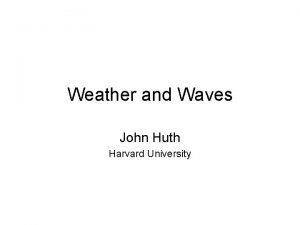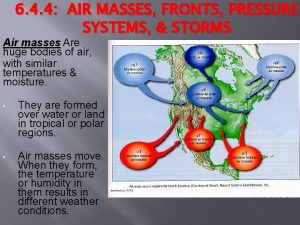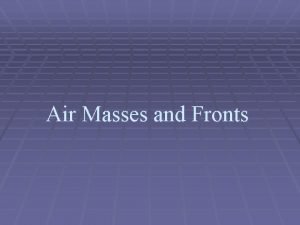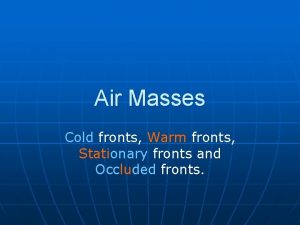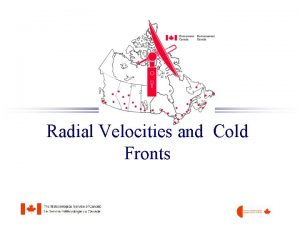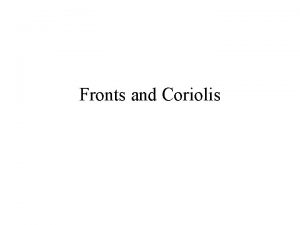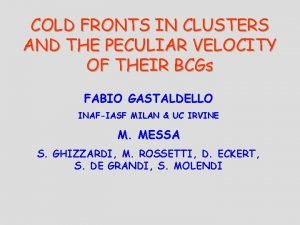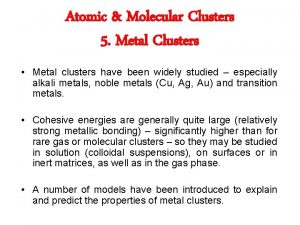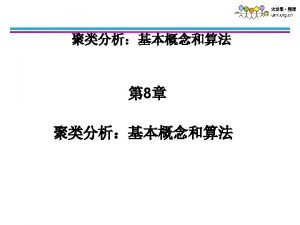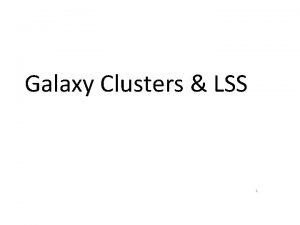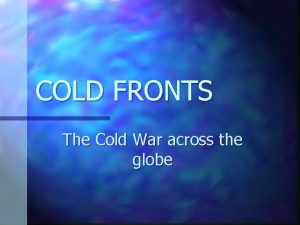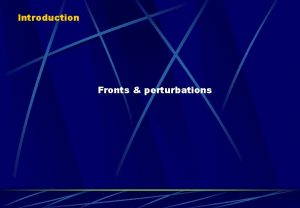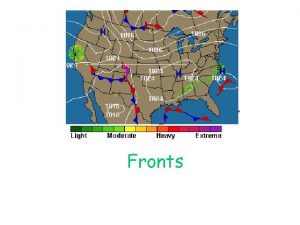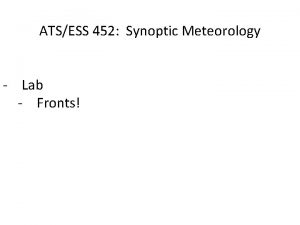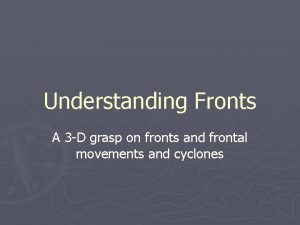Chemical Discriminators of Cold Fronts in Clusters of
























- Slides: 24

Chemical Discriminators of Cold Fronts in Clusters of Galaxies: The Case for A 3667 Renato Dupke University of Michigan, Ann Arbor Alex Vikhlinin and Maxim Markevitch Cf. A

P = n k. T = cont

External Mechanisms (Markevitch et al. 2000)

“Classic” Cold Fronts Abell 496 is a c. D cluster at z=0. 033, has a cold core. The image below shows the main cold front towards the North and other sharp edges (weaker cold fronts) towards SE and SW, indicated by the green arrows below. Abell 3667 & A 2142 at z~0. 06, have indications of an ongoing merger.


From LCDM w/ cooling 30: 1 mass ratio 200 kpc boxsize 50 Mpc time step Induced Internal Mechanisms (Tittley et al. 2005)

parallel PM tree+SPH code GADGET 2 Ascasibar & Markevitch 2006 – DM blob passage – MDM 2/MDM 1=5, b=500 kpc, panel size 1 Mpc, Temp scale shown, arrows show gas velocity wrt DM center

500 km/s

Si/S agrees w/ other ratios Dupke et al. 2007

Flint Blob, 2006

Heinz et al. 2003

A 3667 Temperature - ke. V O/Fe

A 3667 ~ 350 ksec

A 3667 Temperature ke. V

A 3667 Temperature 7 k - ke. V

A 3667

A 3667 Fe

A 3667 O/Fe

A 3667

A 3667 – Si/Fe 7 k


Si/Fe O/Fe

What Does Cosmology Predict? VCE is a prototype theoretical counterpart to the HEASARC archive for X-ray emitting clusters. 68 preheated simulated clusters. With 14 outputs per run, this creates a set of 1000 instances of clusters covering 0<z<2 Dashed Max ΔV, Dot All pointing pairs recovered from the perfect spectra after passing through Suzaku responses. f(>ΔV) α ΔV-4 Pawl, Evrard & Dupke 2005 vce. physics. lsa. umich. edu

Summary • Analysis of the distribution of SN Type enrichment can be used as an additional tool to corroborate the presence of and discriminate between different types of cold fronts in clusters. • For A 496 the combination of temperature distribution and numerical simulations suggests that the cold fronts are formed by sloshing due to the off-center passage of a massive dark clump 0. 5 Gy ago. The analysis of SN type enrichment is also consistent with that scenario. • Abundance ratio distribution across the cold front from a deep observation of A 3667 are consistent with the standard model for cold front formation, i. e. , remnant cores of subsonic or transonic mergers.
 North american air masses
North american air masses Cold and warm fronts
Cold and warm fronts Air mass drawing
Air mass drawing What are the 4 types of fronts?
What are the 4 types of fronts? The cold war lesson 1
The cold war lesson 1 Weather fronts symbols
Weather fronts symbols Fronts
Fronts Four types of fronts
Four types of fronts Air masses in north america
Air masses in north america How a warm front forms
How a warm front forms Traditional drawer construction
Traditional drawer construction Warm front
Warm front Fronts and pressure systems
Fronts and pressure systems Www.phschool.com
Www.phschool.com Air masses and their characteristics
Air masses and their characteristics Occluded front
Occluded front Warm air front
Warm air front Weather fronts animation
Weather fronts animation Types of air masses
Types of air masses Occluded front animation
Occluded front animation Where do polar and tropical air masses develop
Where do polar and tropical air masses develop Air masses and fronts
Air masses and fronts Chemical reactions section 1 chemical changes
Chemical reactions section 1 chemical changes Chemical reactions section 2 classifying chemical reactions
Chemical reactions section 2 classifying chemical reactions Chemical formulas and chemical compounds chapter 7
Chemical formulas and chemical compounds chapter 7

